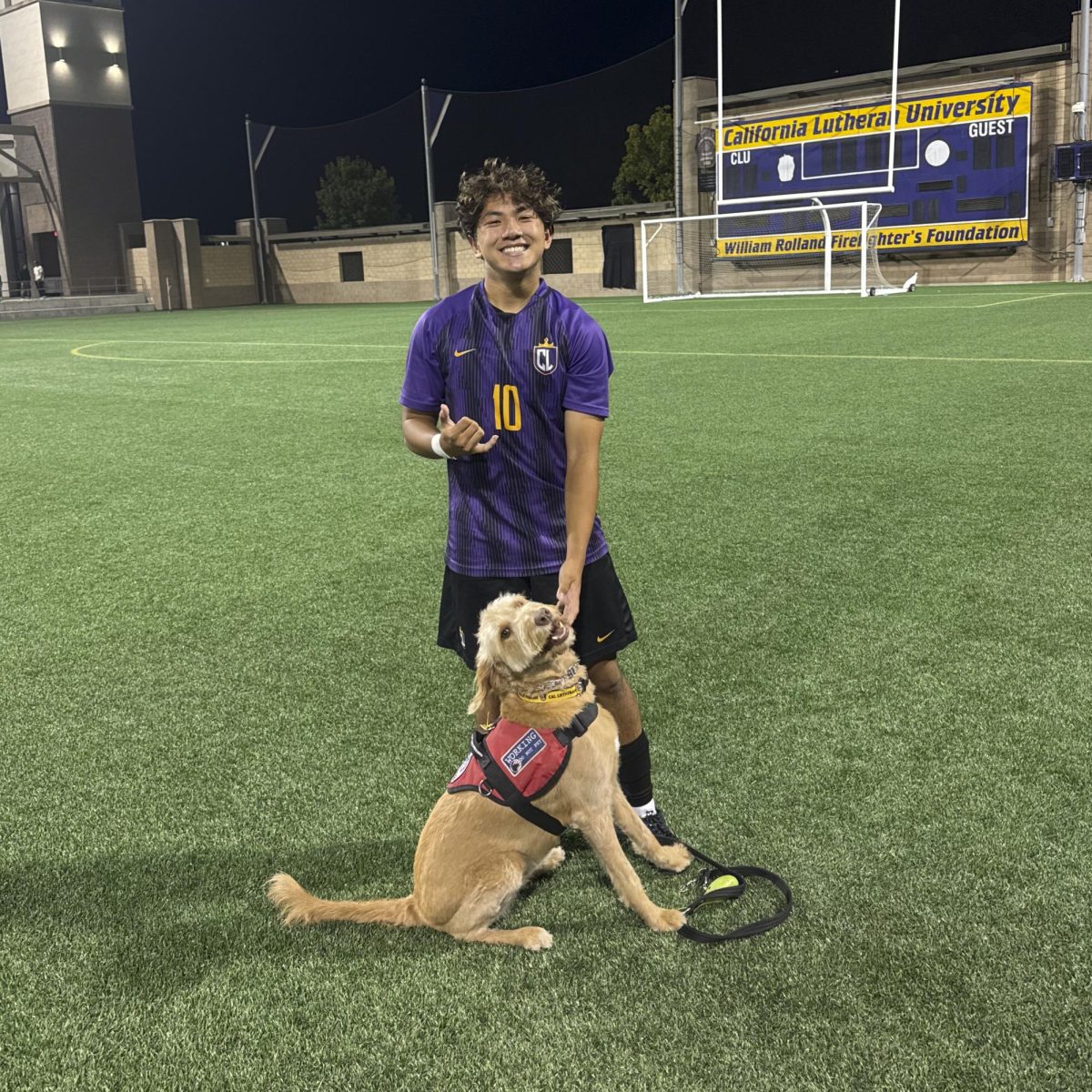Emotional support animals and service animals are working animals, both protected under different laws for potentially different reasons. Nevertheless, they are tasked to help their owners in some way, shape, or form and should be regarded as working animals when in public.
Where an ESA can be any animal like a cat, bunny, dog, and so on. A service animal, on the other hand, is typically a dog that is trained to do tasks for their handler, such as alert their handler for medical reasons or help a person with a disability.
For many students, college can be a time of newfound independence, late-night study sessions, and the occasional existential crisis. But for those facing mental health challenges or disabilities, the journey can be even more overwhelming. That’s where emotional support animals (ESAs) and service animals come in—not as pets, but as companions that provide comfort, stability, and life-saving assistance.
From the challenges of navigating school policies and administrative hurdles to the undeniable benefits of having a furry (or feathered) friend by their side, their experiences shed light on the crucial role these animals play. As someone with my own thoughts on this matter, I’ll also explore the broader conversation around ESAs, accessibility and the evolving attitudes toward working animals in college life.
Director of Disability Support Services at California Lutheran University Wendy Jimenez said that the length of the application process for these assistance animals can vary greatly. Both service animals have different laws and the institution itself has “different policies and procedures that go with each one of those and getting them on campus.”
Getting a doctor’s note as a student does not automatically mean you will be approved for this accommodation on campus. There is still more to the process for the student than just that which is what leads to the length of the process.
“The longest part is getting appropriate, sufficient disability information from a qualified professional that has the necessary information you need,” Jimenez said.
Between both processes, according to Jimenez, the ESA accommodation is the most “rigorous.” Jimenez said not everyone with a disability needs a service animal like an ESA or service dog, which is why the process consists of many steps.
Junior Max Scott is a type one diabetic and the owner of Ruby, his medical alert dog.
Scott said that Ruby is trained to alert him when his blood sugar levels are out of the “normal range” by pawing or jumping on him.
Scott said it doesn’t bother him when people approach him to pet Ruby; however, he says this is very rare for him.
Scott said most of the challenges that he has faced having his service dog on campus have been with faculty.
“She [Ruby] wasn’t wearing her vest and one of the faculty was trying to give me a hard time in Ullman and trying to kick me out. I was like, ‘Dude, she’s a medical alert dog,’” Scott said.
Although this incident wasn’t to target anyone, it makes things challenging when staff or the public, in general, don’t try to figure the situation out before assuming the role of the animal. In this case, Ruby as a service animal is allowed in buildings to accompany Scott.
It is important to learn the difference between an ESA and service animals, according to an article from the National Library of Medicine titled, Public Perception of Service Dogs, Emotional Support Dogs, and Therapy Dogs. Per the article, having a more in-depth understanding and being open to learning the tasks performed by these assistance animals can help fix misunderstandings and misinterpretations of this issue.
A survey conducted in this study, for example, shows that out of 505 responses, 21.1% still did not understand the difference or the roles these animals perform.
Junior Kenda Khatter is the owner of an ESA on campus. Katter said her experiences having her ESA Murphy have been challenging when people approach her and interrupt the work he is tasked to do to assist Khatter.
“I can’t necessarily blame the public. It’s not like we really educate, like, as a school educates on the matter, but it’s frustrating to have to try and mitigate my own accommodations. And not being able to use him as intended because people can’t take [a hint]” Khatter said.
Khatter said Murphy’s job is to ensure that she stays on a “routine in order to prevent a depressive episode,” and to make sure she socializes with people, or if not, ensure she has some type of activity, even if it is just the two of them.
For Scott, he said that respect is important not only for himself but also for Ruby. Scott said that because he looks “like an ordinary dude,” everyone thinks that she is a trainee and not a fully certified alert dog doing a job.
“Just treat Ruby with the same amount of respect as you would treat another medical alert dog,“ Scott said. “We have to remember what their role is, they are trying to help their handler,” Scott said.
Khatter said that despite having staff and students who are kind to her and Murphy, there are some that make it difficult. According to Khatter, learning the policy on campus is important.
“I wish they understood just the school policy for animals on campus in general. No large animal resides on campus as a pet, period,” Khatter said.
Jimenez said having more animals on campus is a positive thing and shows an acceptance between the public and those with disabilities to seek accommodations.
“It [having a disability] was a problem and I think society is slowly, painfully switching to seeing it as these are differences within a diverse population of people,” Jimenez said. “Overall, I think it’s a good thing.”
Being a college student and having a disability that makes it difficult to perform daily tasks is stressful. I own an ESA who is trained to perform certain tasks and keep me on a schedule. Unfortunately, I have faced challenges on campus, with people assuming that I have him for fun, as a pet, and creating inaccurate narratives. These have affected and deterred my accommodations, making it difficult to perform my responsibilities.
I believe that if the public, staff, faculty, and students learn the difference between a pet and a working animal it would benefit the community and lessen issues between public opinion and the owners of these assistance-providing animals.







